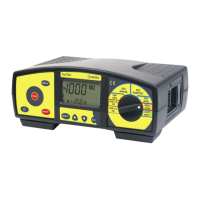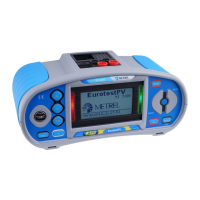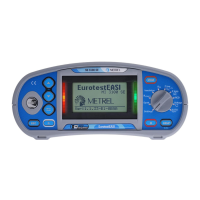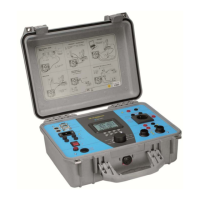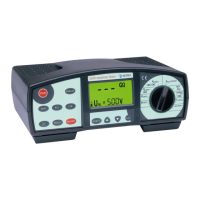MI 3000 EasiPLUS Measurements
30
Notes:
If a voltage of higher than 10 V exists between test terminals, the continuity
measurement will not be performed.
Before performing a continuity measurement, compensate for the test lead
resistance (if necessary). The compensation is performed in Continuity sub-
function R LowΩ.
5.3 Testing RCDs
When testing RCDs, the following sub-functions can be performed:
Contact voltage measurement,
Trip-out time measurement,
Trip-out current measurement,
RCD autotest.
In general the following parameters and limits can be set when testing RCDs:
Limit contact voltage,
Nominal differential RCD trip-out current,
Multiplier of nominal differential RCD trip-out current,
RCD type,
Test current starting polarity.
5.3.1 Limit contact voltage
Safety contact voltage is limited to 50 V
AC
for standard domestic area. In special
environments (hospitals, wet places, etc.) contact voltages up to 25 V
AC
are permitted.
Limit contact voltage can be set in contact voltage Uc function only!
5.3.2 Nominal differential trip-out current
Nominal differential current is the rated trip-out current of an RCD. The following RCD
current ratings can be set: 10 mA, 30 mA, 100 mA, 300 mA, 500 mA and 1000 mA.
5.3.3 Multiplier of nominal residual current
Selected nominal differential current can be multiplied by ½, 1, 2 or 5.
5.3.4 RCD type and test current starting polarity
The EasiPLUS instrument enables testing of general (non-delayed) and selective (time-
delayed, marked with the
S
symbol). The types of RCD the instrument is suitable for
testing include:
Alternating residual current (AC type, marked with symbol),
Pulsating DC residual current (A type, marked with symbol).

